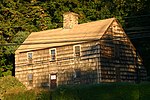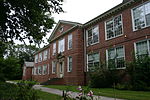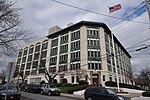Blyth, Inc.
Blyth, Inc. is a Greenwich, Connecticut based marketing and manufacturing company that sells personal and decorative products. In 2001, it was the largest candlemaker in the United States. Subsidiaries include the multi-level marketing companies PartyLite and Visalus. On May 13, 2002, Blyth announced that it has acquired all of the membership interest in CBK, Ltd., LLC, a designer and marketer of giftware and home decor, sold under the CBK brand. Blyth purchased the interests in CBK for total cash consideration of approximately $49.5 million. Midwest CBK was sold to MVP Group International in 2011. CBK was to remain obligated on its indebtedness, including approximately $4.8 million of long-term debt.In 2012 Blyth sold the brand Sterno, which it had acquired in 1997.In 2015, Blyth was acquired by the private equity firm Carlyle Group. Subsidiary Silver Star Brands was sold to Crosby Rock, leaving Blyth with PartyLife.
Excerpt from the Wikipedia article Blyth, Inc. (License: CC BY-SA 3.0, Authors).Blyth, Inc.
East Weaver Street,
Geographical coordinates (GPS) Address Nearby Places Show on map
Geographical coordinates (GPS)
| Latitude | Longitude |
|---|---|
| N 41.01674 ° | E -73.6489 ° |
Address
East Weaver Street 2
06831
Connecticut, United States
Open on Google Maps







